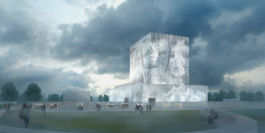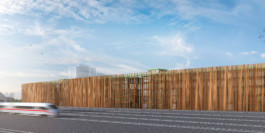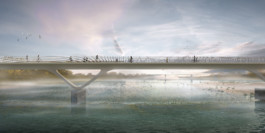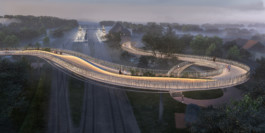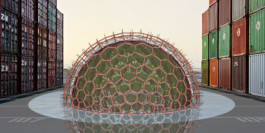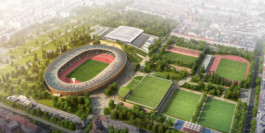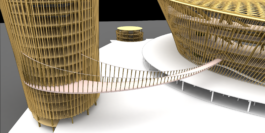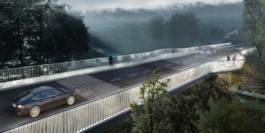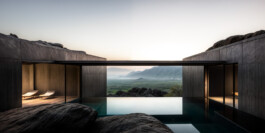What we do
STERLING PRESSER delivers innovative, elegant and sustainable projects. We design buildings, infrastructures, masterplans, interiors and objects with the common goal: to achieve sustainable projects. We design with the future in mind. Our team works on the questions of our time: can we change the way we currently live, work and circulate.
Architectural Design
We deliver full architectural design services. In today’s world, designing a building is about much more than the development of a program into space. That’s why we question deeply any briefs to consider how to achieve any sustainability and environmental improvement. The ways people live, work and circulate is a driver for change. That makes it our responsibility to ensure our designs are flexible enough to move with any future challenges. Our team is set up as a single point of contact in order to facilitate the project development and coordination throughout.
We work with flexibility with other design specialists, other practices, local partners and approval body. As the projects develop, we keep an involvement and a level of support and commitment up to construction. Together and in line with engineering and technical approach, we endeavour the full architectural and design review, so that the best concepts are adopted.
Infrastructure Design
Our engineering expertise allows us to design not only buildings but also complex infrastructure projects, including bridges and transit connections. We embed structural logic into the architectural concept from day one, ensuring efficiency, safety, and elegance. By working across disciplines, we develop technically robust and visually compelling solutions that stand the test of time.
Sustainability & environmental strategies
We are dedicated to sustainability in every construction project. From the start, we consider environmental impacts to minimize future effects. We work with our design team to create eco-friendly plans and consult with local groups to ensure our projects are responsible.
Use of materials
Our specifications actively support the reuse of recycled materials and components, and we consistently select products made from recycled materials. Whenever possible, we favor refurbishing existing buildings over new construction. We design for the demountability of fabric and structure to facilitate reuse and recycling, and ensure the longevity of new buildings by focusing on quality, flexibility, adaptability, low energy use, simplicity, and robustness.
Circular economy
We prioritize the reuse of site-won materials and efficient cut and fill management to minimize waste and environmental impact. Additionally, we contribute to the client's sustainable procurement strategy, ensuring that our projects align with broader environmental goals and promote the reuse and recycling of materials throughout the construction process.
Carbon management
We aim to understand carbon intensities across asset lifecycles, including energy, water, waste, and transport, and perform optioneering exercises based on multi-criteria analyses. Additionally, we promote sustainable transportation by encouraging the use of public transport and designing spaces for electric vehicles (EVs) and car-sharing programs, engaging with stakeholders to support these initiatives.
Improved quality of life
We view the earth as a closed system within which there should be no waste. The UNFCCC’s Kyoto Protocol and Paris Agreement leave no room for doubt: it is vital that CO2 emissions are substantially reduced, if we are to ensure the survival of humankind and animal life and the planet as we know it. New construction represents one of our best and greatest opportunities for systemic restoration: if built regeneratively, our cities can act as carbon sinks and create equitable development opportunities. New construction needs to be based on a circular, long-term approach from an early stage of the design process.
Computational design & advanced technologies
Innovation comes from an open minded and pragmatic approach to design. It is often equated with an invention, a new idea. It is also about the path and the process: behind every good innovation, there is always an extraordinary pattern of thought that leads to the formulation of the idea and its delivery. A novel concept must also stand the test of time and benefit for the architectural project and to the society as an extent.
Parametric design
Parametric design is central to our process. We use advanced geometry and algorithmic modeling to define and refine complex forms. Our team is skilled in scripting and mathematical modeling, allowing us to rapidly generate, test, and optimize design solutions — from building skins to bridge structures. This data-driven approach allows for better-informed decisions early in the design process and leads to smarter, more efficient architecture.
Building Information Modeling (BIM)
We champion a collaborative, integrated workflow through a unified BIM process. BIM allows us to coordinate seamlessly between architecture, structural and civil engineering, and other disciplines from the earliest design stages. This method enhances clarity, reduces errors, and supports construction efficiency. We apply multi-objective optimization and real-time simulation tools to ensure projects are buildable, sustainable, and precisely delivered.
AI & Generative Tools
Artificial Intelligence plays a growing role in how we explore design possibilities. From concept generation to site analysis and visual testing, we leverage AI tools to accelerate early-stage decisions. Using platforms like MidJourney for atmospheric studies and AI-supported layout tools, we’re able to test more ideas in less time — always with a critical eye toward authorship, ethics, and originality.
AR / VR & Immersive Design
Immersive technologies like Augmented and Virtual Reality enable us to communicate design ideas in new and powerful ways. Tools such as Twinmotion and Enscape allow real-time walkthroughs, material testing, and lighting analysis in fully navigable 3D environments. Clients and collaborators can engage with the design before construction begins — making feedback faster and more effective.
Modern methods of construction
We design with construction in mind. Our adoption of MMC strategies — including prefabrication, modular design, and digital fabrication — reflects our commitment to efficiency and sustainability. By learning from industries like aerospace and automotive, we aim to reduce waste, shorten build times, and increase project quality through smart, repeatable systems.
Rapid Prototyping & Simulation
Through digital prototyping, we can simulate and test ideas at high speed. Whether iterating façade systems, evaluating structural behavior, or analyzing environmental performance, we use early-stage models to compare and optimize options. This rapid-feedback loop supports better collaboration with engineers and fabricators and ensures that design intent remains strong from concept through construction.
